Managing multiple companies means handling separate finances, different teams and workflows. Odoo simplifies this by letting you manage them all in one database while keeping clear distinctions.
You can manage multiple companies in a single Odoo database
Odoo’s multi-company functionality allows you to operate several businesses from one system while keeping data structured and access controlled. Each company can have its own customers, suppliers, warehouses, and financial records, or you can share resources where needed.
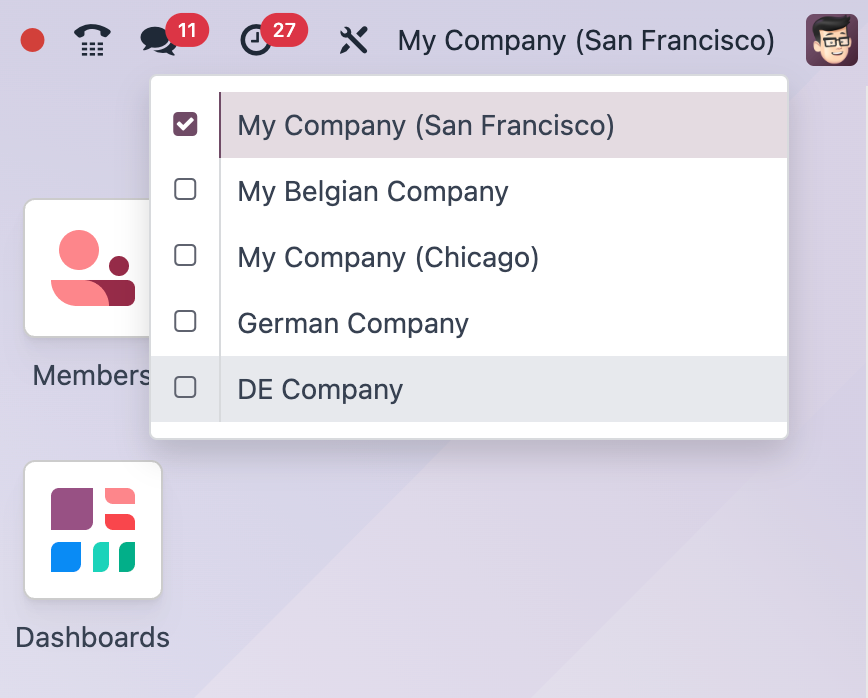
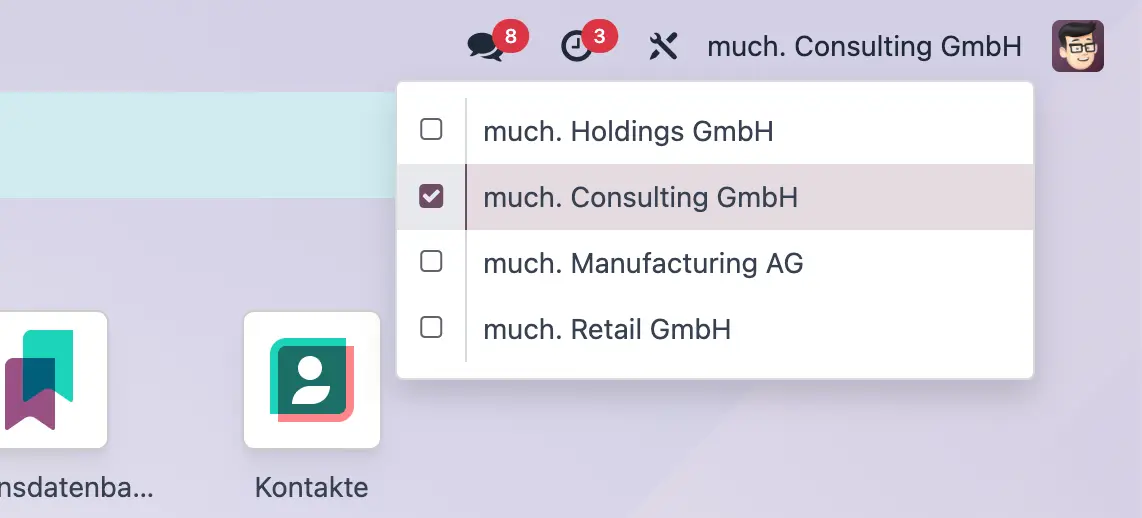
Odoo’s multi-company feature offers many benefits
This flexibility allows businesses with multiple legal entities, subsidiaries, or brands to operate efficiently within a single system.
Each company has its own settings, including accounting rules, bank accounts, and tax configurations.
Users can be assigned to specific companies or have access to multiple companies with the right permissions.
Certain data (such as products or contacts) can be shared across companies or kept separate.
Inter-company transactions, such as invoicing or stock transfers, can be automated.
Odoo multi-company simplifies key operations for multi- entity businesses
Odoo provides businesses with multiple entities with the flexibility to operate independently while enabling structured collaboration where needed. These are some ways in which Odoo can help your multi-company operations:
- Multi-entity accounting: Odoo generates separate financial reports per company or consolidates financial data across entities.
- Multiple websites: you can run distinct websites for each company with independent branding and domains, while optionally sharing customer accounts or pricing.
- Inter-company stock and purchases: Odoo automates stock transfers and inter-company sales or purchase orders to reduce manual work.
- Shared employee management: you can assign employees to multiple companies with controlled access, managing payroll and expenses per entity or centrally.
How to configure your Odoo multi-company setup
1. Create a new company
Go to General Settings > Companies > Manage Companies

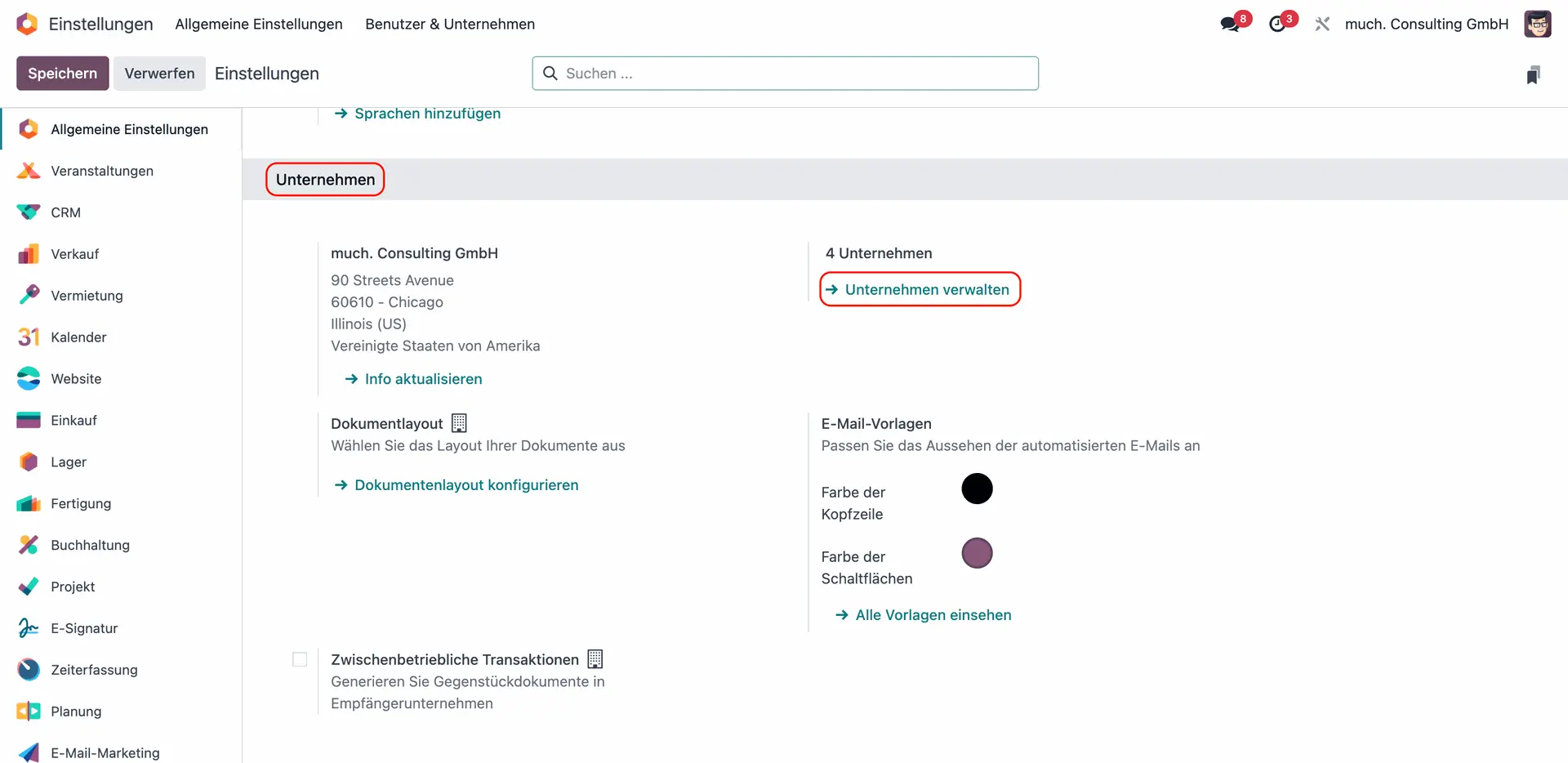
Click New, then fill in the company’s details (name, address, VAT, currency, etc.) and save the company.
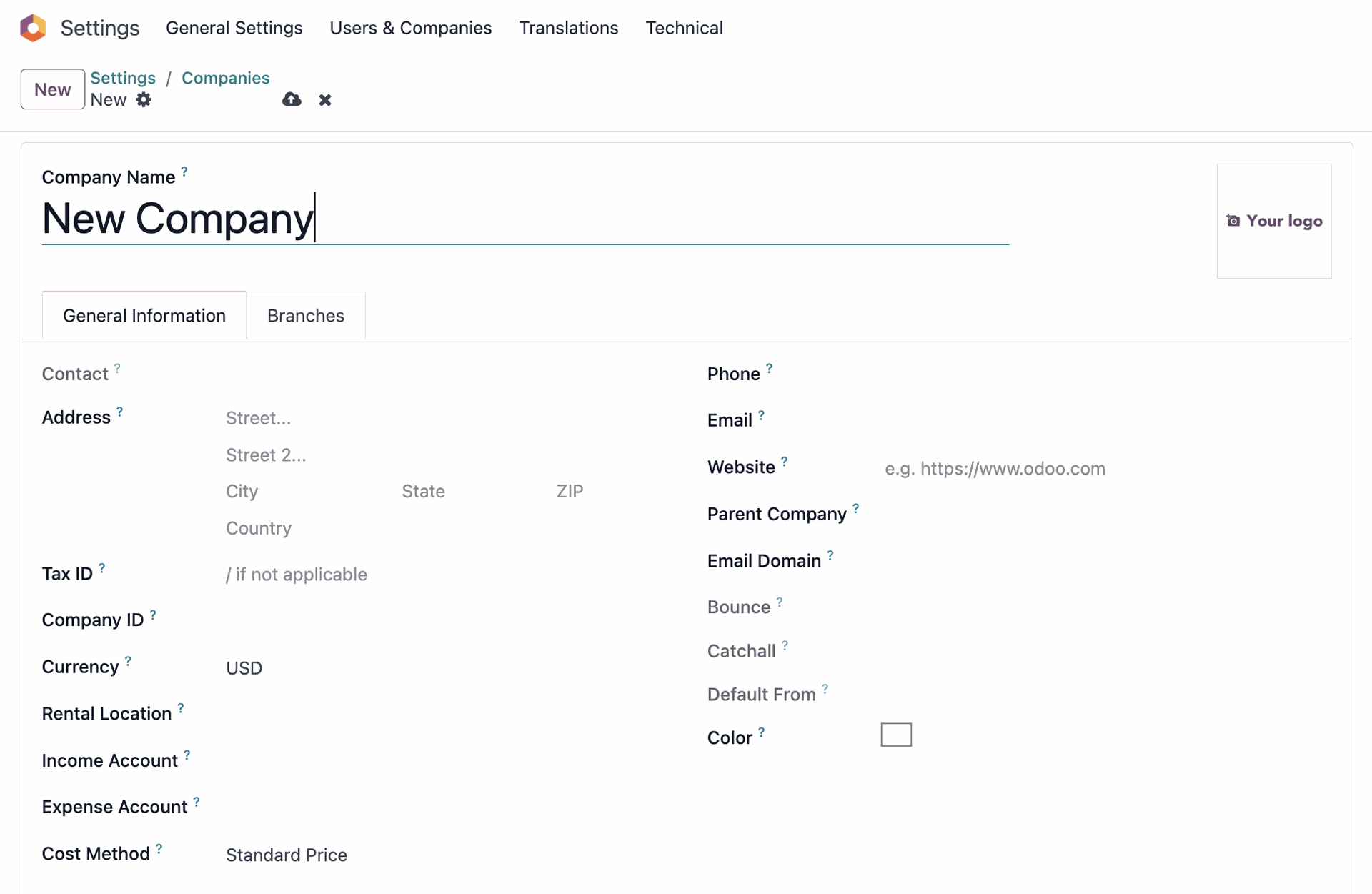

2. Manage & edit companies
To edit an existing company:
- Go to General Settings > Companies > Manage Companies and select the company


To archive a company:
- Click the List View icon in the top-right corner
- Tick the checkbox next to the company name
- Click on Actions > Archive


3. Assign user access rights
Go to General Settings > Users > Manage Users


Select a user and update their Allowed Companies:
- Users with access to multiple companies can switch between them
- Users with access to only one company can only work within that company
Set the Default Company (users can have multiple allowed companies, but only one default).
Adjust user permissions based on their role in each company.
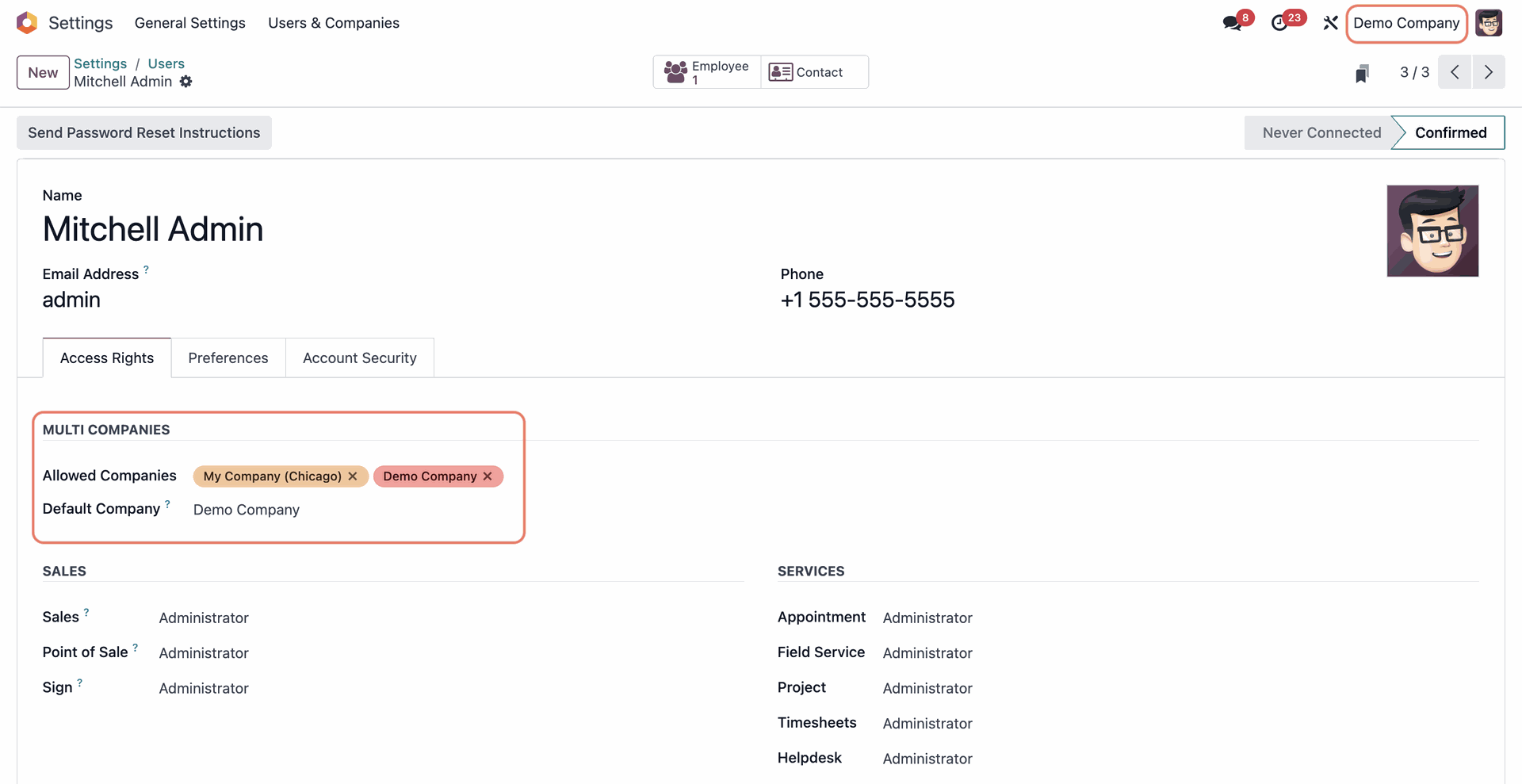
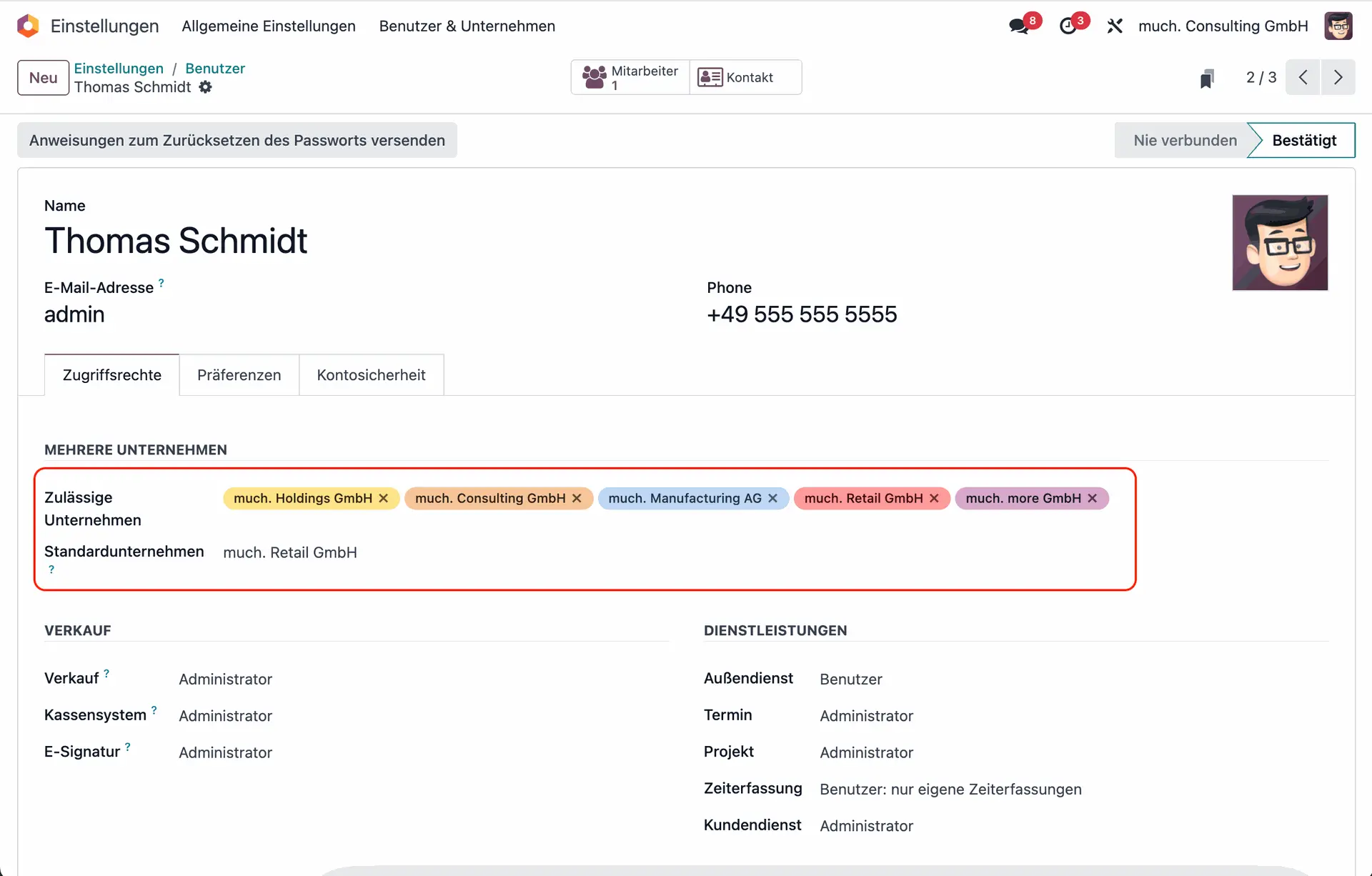
4. Switch between companies
Click the company name in the top-right corner of the Odoo interface.
Tick the checkboxes next to the companies you want to activate.
The highlighted company is the active environment.
If multiple companies are activated, Odoo will show shared records where applicable.

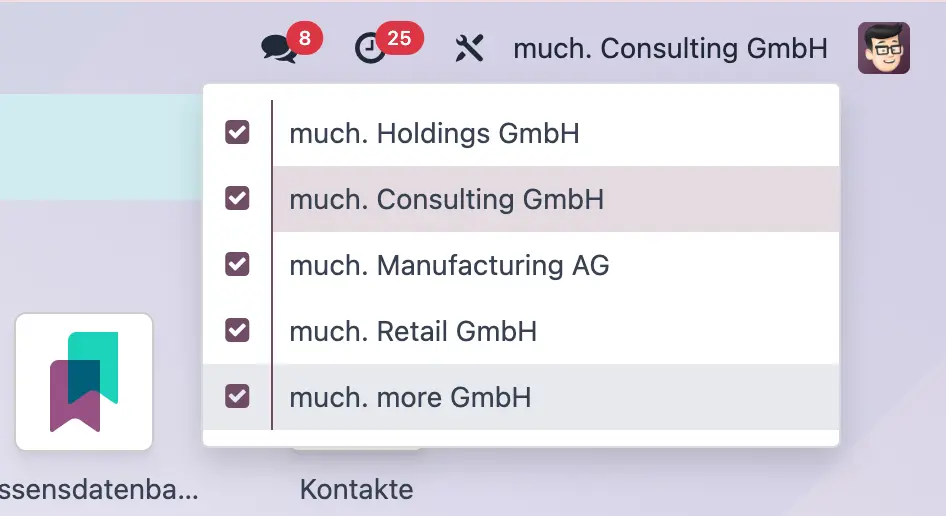
5. Share or restrict data between companies
In a multi-company setup, some records (such as products, contacts, and equipment) can be shared across all companies or restricted to a specific company. Odoo allows you to control this at the record level.
- To share a record across all companies: leave the Company field blank.
- To restrict a record to a specific company: Select the relevant company in the Company field
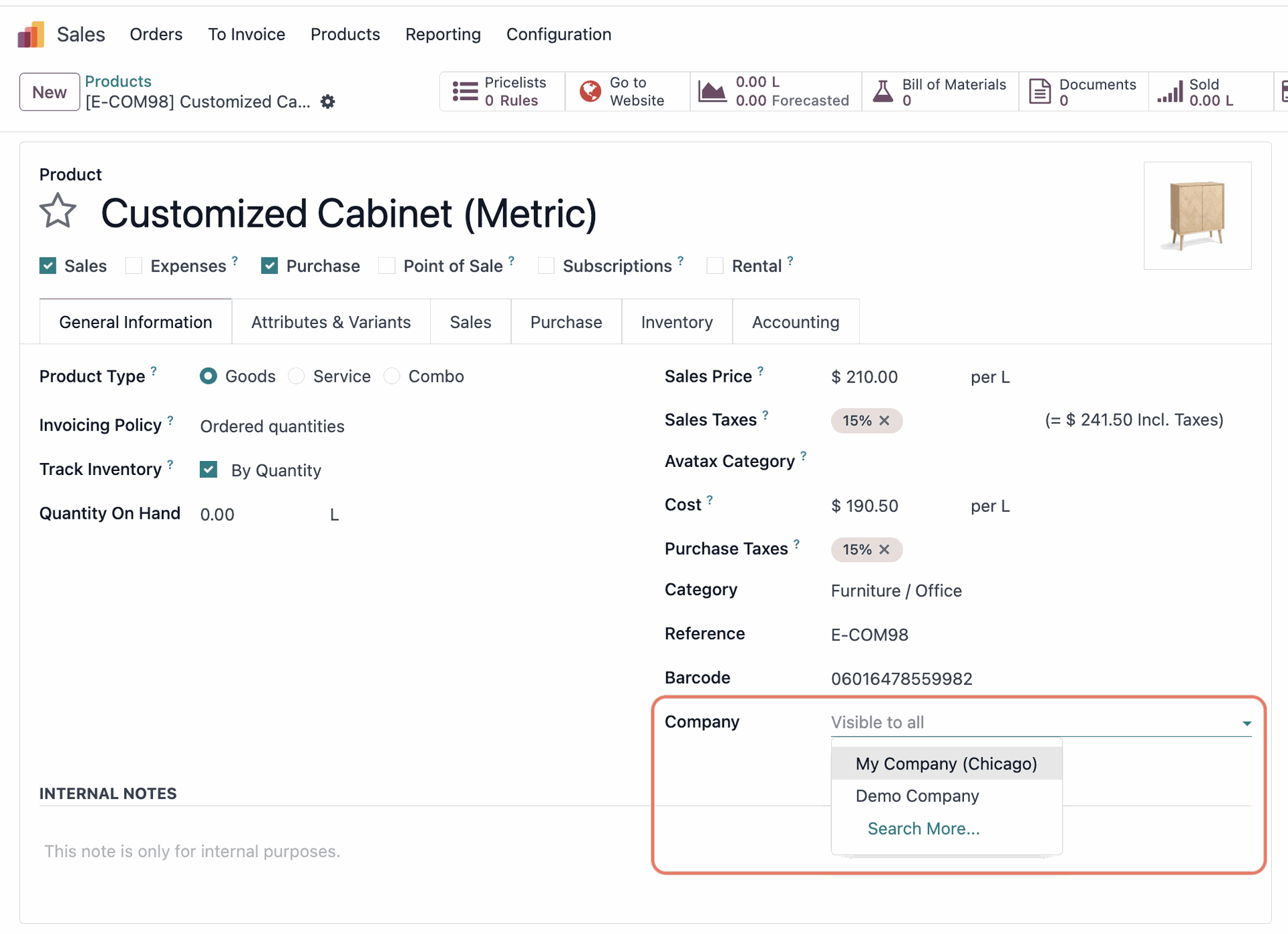
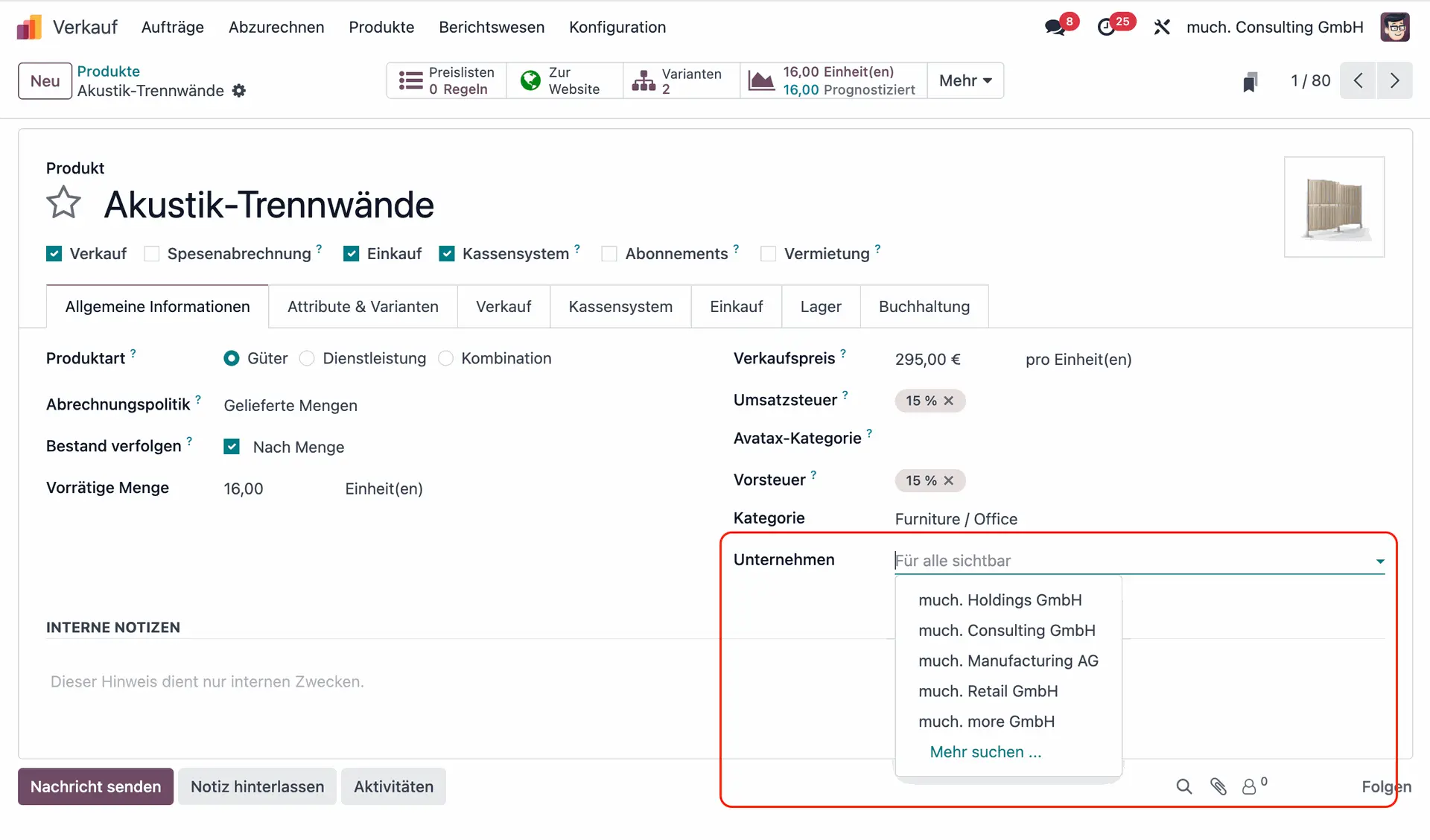
When multiple companies are activated in the top-right company selector, records shared between those companies will be visible in both environments.
When working in a multi-company setup, creating a new record will:
- Use the active company (the one highlighted in the company selector)
- Default to no company if the record type supports cross-company use (e.g., products)
- Follow company-specific settings if the record is tied to a document from another company (e.g., a sale order for a different entity)
6. Add branches (if needed)
Branches are subdivisions within a company, useful for structuring departments, locations, or regional offices.
- To add a branch, go to General Settings > Companies > Manage Companies
- Select the company that the branch belongs to
- Open the Branches tab and click Add a Line
- Fill in the branch details and save
FYI - Branches inherit accounting and fiscal settings from their parent company.
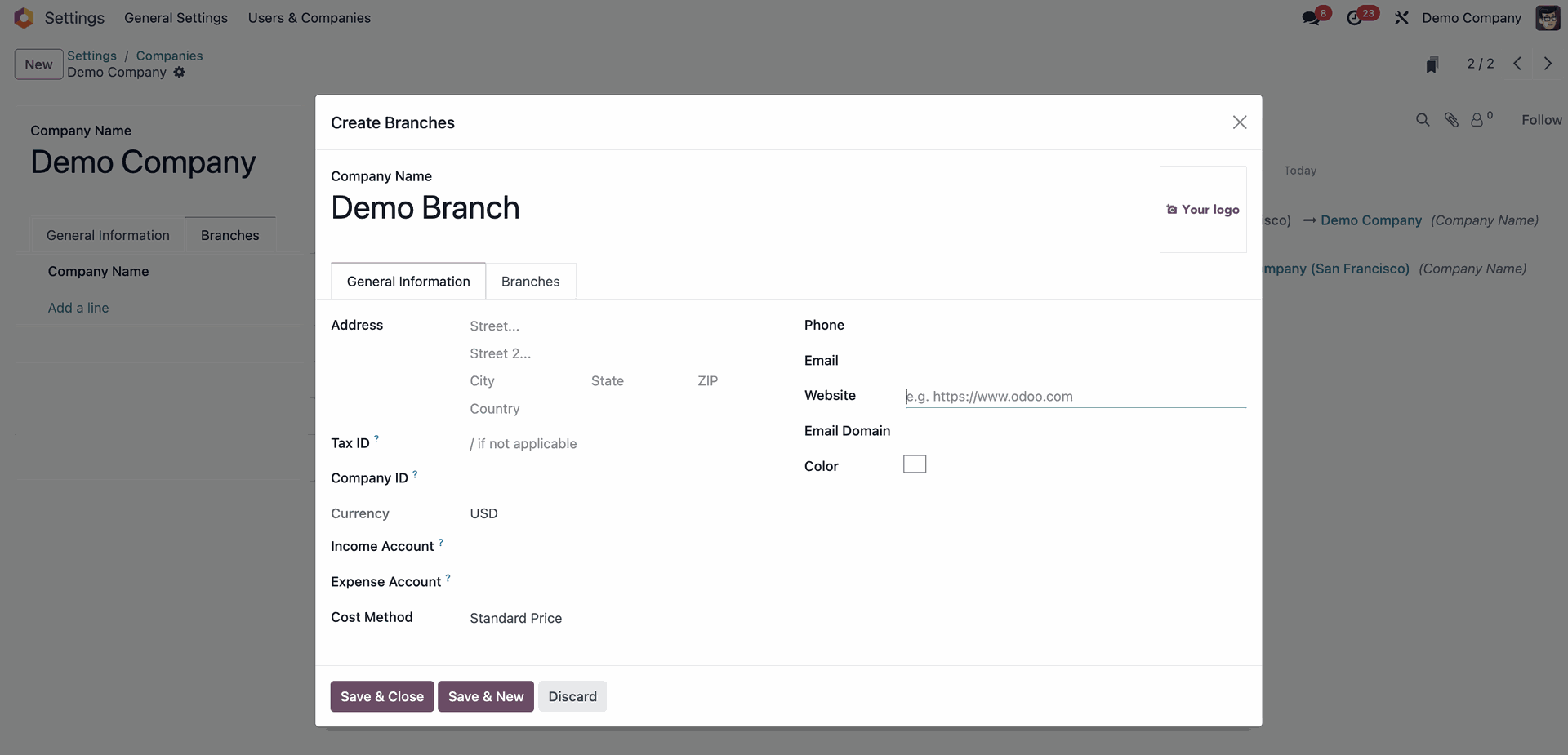
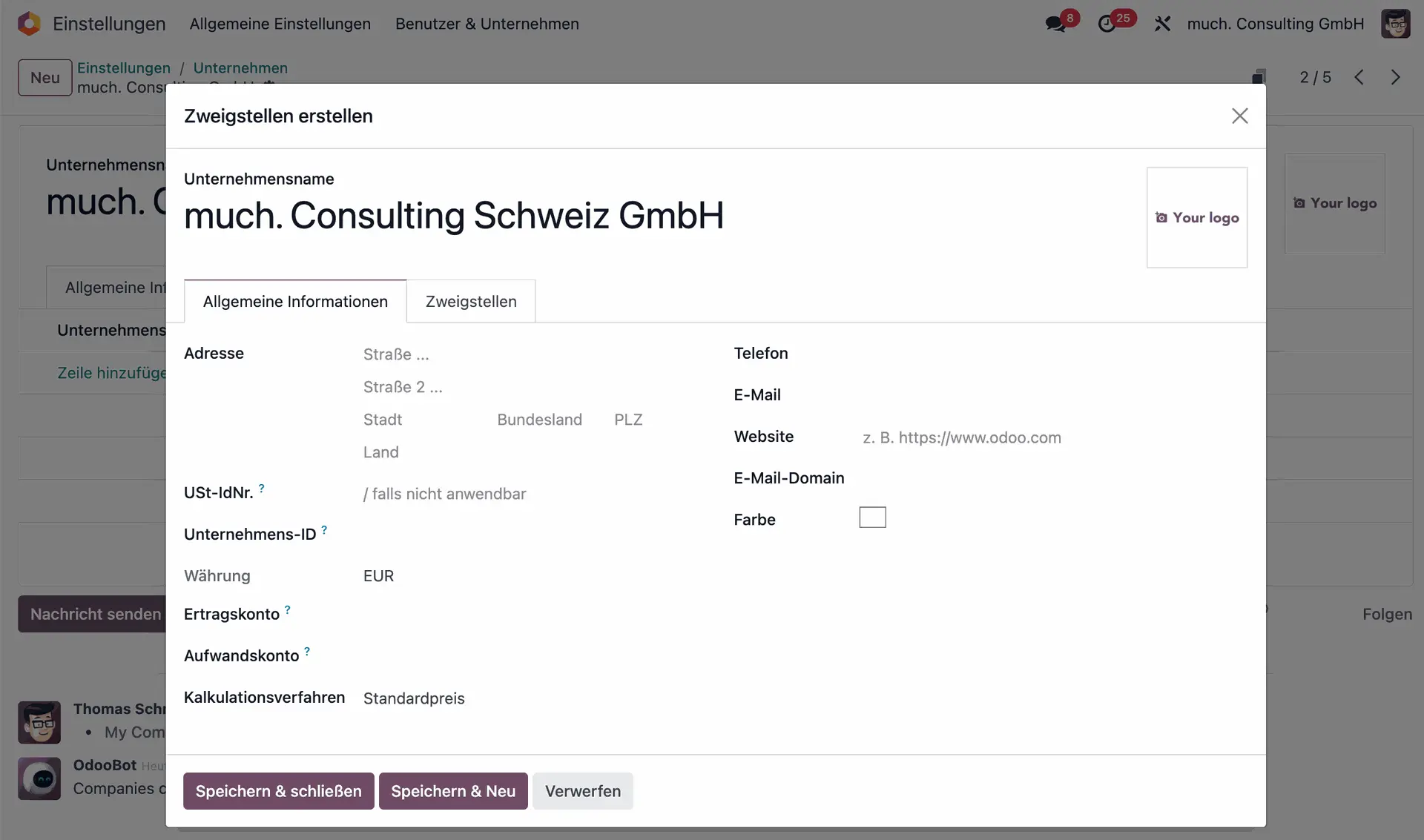
Odoo multi-company works across all Odoo apps
Odoo’s multi-company setup integrates across all apps, ensuring businesses can manage multiple entities efficiently. Here's how it works in key areas:
 Sales & CRM
Sales & CRM
- Manage separate or shared customer databases.
- Assign sales teams to specific companies.
- Create price lists for each company or share them across businesses.
 Inventory & Manufacturing
Inventory & Manufacturing
- Keep stock separate per company or allow inter-company transfers.
- Configure warehouses for each company.
- Automate inter-company stock movements.
 Website & eCommerce
Website & eCommerce
- Run separate websites per company with their own branding, domains, and product catalogues.
- Share customer accounts across websites if needed.
 HR & Payroll
HR & Payroll
- Assign employees to a specific company or allow them to work across multiple entities.
- Separate or centralise payroll and expenses.
 Accounting & Finance
Accounting & Finance
- Keep financial reports separate or generate consolidated reports for all companies.
- Assign different charts of accounts and tax rules per company.
- Automate inter-company invoices and transactions.
Need help managing multiple companies in Odoo?
Whether you need full separation between companies or controlled inter-company interactions, we can help ensure everything is set up correctly. Talk to our experts to discuss your Odoo setup and business needs!